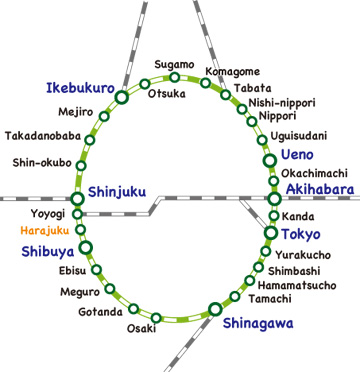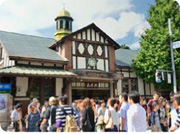Home > Highlighting JAPAN > Highlighting Japan AUGUST 2012 > Yamanote Line
Highlighting JAPAN
[SERIES] STUDENTS'CORNER: Ways of Japan
Yamanote Line

Yamanote Line and its stations

There are twenty-nine stations on the Yamanote Line. Many are used by large numbers of people, not only Japanese but also visitors from overseas. These include Tokyo Station, which could be called the gateway to Japan; Shinjuku Station, the busiest in Japan with 1.46 million passengers boarding and alighting from the trains each day; and Akihabara Station, known for its "Electric Town." The Yamanote Line is also convenient for getting around the Tokyo metropolitan district, since railway networks and underground railways radiate out to the suburbs of Tokyo from its stations. When travelling in Tokyo, a ride on the Yamanote line is a must. You can enjoy the varied aspects of Tokyo from the inside of the carriage.

Q1: The Yamanote Line has sotomawari (outer circle) and uchimawari (inner circle) trains. What do these terms mean?
A. Uchimawari are trains that run clockwise, and sotomawari are trains that run anti-clockwise.
B. Sotomawari are trains that run clockwise, and uchimawari are trains that run anti-clockwise.
C. Sotomawari are trains bound for the suburbs, and uchimawari are trains bound for central Tokyo.

2: Harajuku Station (photo) on the Yamanote line has two platforms, one of which is used during a particular period. When is this?
A. New Year
B. Christmas
C. Thanksgiving
© 2009 Cabinet Office, Government of Japan






